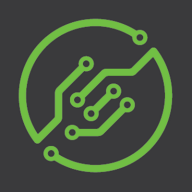

Datadog and Evanios are both monitoring and management tools but cater to different needs within the IT infrastructure category. Datadog appears to have the upper hand in infrastructure monitoring, while Evanios stands out in event management and automation.
Features: Datadog is recognized for its extensive monitoring capabilities, real-time analytics, and seamless cloud integration. Evanios is noted for its advanced event correlation, automation features, and capabilities that simplify IT operations.
Room for Improvement: Datadog could enhance its alert noise management, incident response automation, and scalability options for expanding infrastructures. Evanios might improve its analytics and visualization capabilities, integration variety, and user interface for broader adoption.
Ease of Deployment and Customer Service: Datadog offers a simple cloud-based deployment with comprehensive documentation and responsive customer support. Evanios provides both on-premises and cloud deployment options, along with personalized customer service focusing on specific business needs.
Pricing and ROI: Datadog features a usage-based pricing model, which can be economical for smaller setups but may become costly as infrastructure scales. Evanios offers a pricing model that emphasizes long-term savings through automation, focusing on reducing operational overhead.
The documentation is adequate, but team members coming into a project could benefit from more guided, interactive tutorials, ideally leveraging real-world data.
There should be a clearer view of the expenses.
The setup cost for Datadog is more than $100.
Our architecture is written in several languages, and one area where Datadog particularly shines is in providing first-class support for a multitude of programming languages.
The technology itself is generally very useful.

Datadog is a comprehensive cloud monitoring platform designed to track performance, availability, and log aggregation for cloud resources like AWS, ECS, and Kubernetes. It offers robust tools for creating dashboards, observing user behavior, alerting, telemetry, security monitoring, and synthetic testing.
Datadog supports full observability across cloud providers and environments, enabling troubleshooting, error detection, and performance analysis to maintain system reliability. It offers detailed visualization of servers, integrates seamlessly with cloud providers like AWS, and provides powerful out-of-the-box dashboards and log analytics. Despite its strengths, users often note the need for better integration with other solutions and improved application-level insights. Common challenges include a complex pricing model, setup difficulties, and navigation issues. Users frequently mention the need for clearer documentation, faster loading times, enhanced error traceability, and better log management.
What are the key features of Datadog?
What benefits and ROI should users look for in reviews?
Datadog is implemented across different industries, from tech companies monitoring cloud applications to finance sectors ensuring transactional systems' performance. E-commerce platforms use Datadog to track and visualize user behavior and system health, while healthcare organizations utilize it for maintaining secure, compliant environments. Every implementation assists teams in customizing monitoring solutions specific to their industry's requirements.
A key component of the Event Management process is consolidation of events from across the enterprise. By consolidating disparate events into a single solution, they can be de-duplicated and correlated. For example, network failure events can be correlated with system failures, and then prioritized based on service impact.
Reduce the noise
Evanios Integrations allows filtering and processing close to the event source, keeping the weight off of the ServiceNow system for increased performance. Filters are easily configured. EVA, the Evanios consolidation point also has built in event flood control features, to protect against unexpected event storms which can quickly overload traditional integrations.
We monitor all IT Infrastructure Monitoring reviews to prevent fraudulent reviews and keep review quality high. We do not post reviews by company employees or direct competitors. We validate each review for authenticity via cross-reference with LinkedIn, and personal follow-up with the reviewer when necessary.